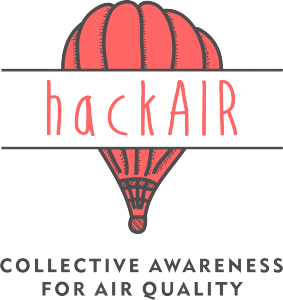TENSOR
Retrieval and Analysis of Heterogeneous Online Content for Terrorist Activity Recognition

Project Description
Law Enforcement Agencies (LEAs) across Europe face today important challenges in how they identify, gather and interpret terrorist generated content online. The Dark Web presents additional challenges due to its inaccessibility and the fact that undetected material can contribute to the advancement of terrorist violence and radicalisation. LEAs also face the challenge of extracting and summarising meaningful and relevant content hidden in huge amounts of online data to inform their resource deployment and investigations.
The main objective of the TENSOR project is to provide a powerful terrorism intelligence platform offering LEAs fast and reliable planning and prevention functionalities for the early detection of terrorist organised activities, radicalisation and recruitment. The platform integrates a set of automated and semi-automated tools for efficient and effective searching, crawling, monitoring and gathering online terrorist-generated content from the Surface and the Dark Web; Internet penetration through intelligent dialogue-empowered bots; Information extraction from multimedia (e.g., video, images, audio) and multilingual content; Content categorisation, filtering and analysis; Real-time relevant content summarisation and visualisation; Creation of automated audit trails; Privacy-by-design and data protection.
Relevance for beAWARE
Extract information from multimedia, automatic speech recognition
Classification and topic and event detection approaches
Semantic reasoning
Text generation techniques
hackAIR
Collective Awareness for Air Quality

Project Description
hackAIR is an EU-funded project aiming to develop an open technology platform for citizen observatories on air quality. It is supported through the EU programme on “Collective Awareness Platforms for Sustainability and Social Innovation” until December 2018.
Following a co-creation process with users and the development of the hackAIR platform and its components, the hackAIR platform will be pilot tested in Norway and Germany starting in September 2017 in order to validate the service platform and contribute towards individual and collective awareness about air quality in Europe, encouraging changes in behaviour towards air quality improvements.
By pilot testing the hackAIR platform and related collective sensing tools, the project aims to raise collective awareness about the daily levels of human exposure to air pollution.
Relevance for beAWARE
Social media mining
Visual analysis
Sensing technology
MULTISENSOR
Mining and Understanding of multilinguaL contenT for Intelligent Sentiment Enriched coNtext and Social Oriented inteRpretation

Project Description
MULTISENSOR is an EU funded research project, which aims at advancing the research and development of multilingual media analysis technologies. The goal is to enable users (e.g. journalists, entrepreneurs) to attain a comprehensive and exact understanding of topics they are engaged in, not only from their own but from multiple viewpoints.
MULTISENSOR stands for Mining and Understanding of multilinguaL contenT for Intelligent Sentiment Enriched coNtext and Social Oriented inteRpretation. Scanning multiple heterogeneous sources MULTISENSOR will help gather and semantically integrate various local subjective and biased views disseminated via TV, radio, mass media websites and social media. Using sentiment, social and spatiotemporal methods MULTISENSOR will then help to interpret, relate and summarize economic information and news items.
Relevance for beAWARE
Classification and topic and event detection approaches
Semantic reasoning
Text generation techniques
ANYWHERE
EnhANcing emergencY management and response to extreme WeatHER and climate Events

Project Description
The principal objective of ANYWHERE is to enable society as a whole and the main civil protection agencies to respond more rapidly than today to extreme climate and weather events, and to better cope with the high social, environmental and economic impacts related to these extremes.
The Project will establish a pan-European platform on extreme climate risks that will enable to identify, in a number of geographic regions, critical situations that could lead to loss of life and economic damages. Such early-warning should enable to improve protection measures and, in case of catastrophic situations, ameliorate the coordination of rescue operations.
The platform will therefore serve as decision-making tool for various authorities when faced with a situation of crisis, and will provide state-of-the-art early warning systems to help exposed populations avert disaster.
Relevance for beAWARE
Integration of emergency management data coming from multiple sources
Climate crisis managements solutions
Coordination of the emergency response operations
I-REACT
Improving Resilience to Emergencies through Advanced Cyber Technologies

Project Description
I-REACT is an innovation project funded by the European Commission. The project aims to integrate emergency management data coming from multiple sources, including that provided by citizens through social media and crowdsourcing. This way, it will be possible to produce information faster and allow citizens, civil protection services and policimakers to effectively prevent and/or react against natural disasters.
Relevance for beAWARE
Integration of emergency management data coming from multiple sources
Climate crisis managements solutions
Coordination of the emergency response operations
ROBORDER
Autonomous swarm of heterogenous robots for border surveillance
Project Description
Border authorities and Law Enforcement Agencies (LEAs) across Europe face important challenges in how they patrol and protect the borders. Their work becomes more problematic considering the heterogeneity of threats, the wideness of the surveyed area, the adverse weather conditions and the wide range of terrains. Towards delivering a solution including all such factors, the main goal of ROBORDER is to develop and demonstrate a fully-functional autonomous border surveillance system with unmanned mobile robots including aerial, water surface, underwater and ground vehicles which will incorporate multimodal sensors as part of an interoperable network. Our intention is to implement a heterogenous robot system and enhance it with detection capabilities for early identification of criminal activities at border and coastal areas along with marine pollution events.
The system will be equipped with adaptable sensing and robotic technologies that can operate in a wide range of operational and environmental settings. To provide a complete and detailed situational awareness picture that supports highly efficient operations, the network of sensors will include enhanced static networked sensors such as border surveillance radars, as well as mobile sensors customised and installed on the vehicles. These will include: (i) passive radars that can extend the capabilities of the existing border surveillance radars, (ii) passive RF-signal sensing devices to intercept emission sources that are present in area, enrich the overall situational awareness picture with this information, allowing for further characterizing the nature and behaviour of entities in the picture, and detecting unauthorized signal sources and (iii) other mobile sensors like thermal cameras (infra-red), optical cameras and more . To succeed in the implementation of an operational solution, a number of supplementary technologies will also be applied enabling the establishment of robust communication links between the command and control unit and the heterogeneous robots. On top of this, detection capabilities for early identification of criminal activities and hazardous incidents will be developed. This information will be forwarded to the command and control unit that will enable the integration of large volumes of heterogeneous sensor data and the provision of a quick overview of the situation at a glance to the operators, supporting them in their decisions.
ROBORDER WebsiteEOPEN
Open interoperable platform for unified access and analysis of Earth Observation data

Project Description
Earth Observation (EO) data access through the Copernicus data distributor systems has paved the way to monitor changes on Earth, using Sentinel data. One of the main objectives of EOPEN is to fuse Sentinel data with multiple, heterogeneous and big data sources, to improve the monitoring capabilities of the future EO downstream sector. Additionally, the involvement of mature ICT solutions in the Earth Observation sector shall address major challenges in effectively handling and disseminating Copernicus-related information to the wider user community, beyond the EU borders. EOPEN will fuse Copernicus big data content with observations from non-EO data, such as weather, environmental and social media information, aiming at interactive, real-time and user-friendly visualisations and decisions from early warning notifications. The fusion is also performed at the semantic level, to provide reasoning mechanisms and interoperable solutions, through the semantic linking of information. Processing of large streams of data is based on open-source and scalable algorithms in change detection, event detection, data clustering, which are built on High Performance Computing infrastructures. Alongside this enhanced data fusion, a new innovative, overarching Joint Decision & Information Governance architecture will be combined with the technical solution to assist decision making and visual analytics in EOPEN. Besides EO product-oriented data management activities, EOPEN also exploits user-oriented feedback, tagging, tracking of interactions with other EOPEN users. EOPEN will be demonstrated in real use case scenarios in flood risk monitoring, food security and climate change monitoring.
EOPEN WebsiteeOUTLAND
Protecting biodiversity at NATURA 2000 sites and other protected areas from natural hazards through a certified framework for cross-border education, training and support of civil protection volunteers based on innovation and new technologies

Project Description
eOUTLAND, successor of a previous successful project OUTLAND, comes to capitalize past experience in order to establish better terms in the protection of NATURA 2000 and other protected areas of the cross-border area against natural hazards, especially floods and wildland fires. Natural hazards with catastrophic impacts on the natural environment and biodiversity do not have local characters while they can affect large areas across the Greece-Bulgaria area.
The project aims to valorize and reinforce the civil protection volunteers of the cross-border area in order to establish a joint certified, integrated and appropriately equipped framework for their education, training and operational support in matters of wildland fire and flood management. This will lead to the enhancement of the cross-border biodiversity protection against natural hazards and the improvement of conservation status of cross-border habitats and also to the protection of societies from upcoming natural disasters.
The cross-border approach will also address the issues of efficient cross-border cooperation and operational compatibility amongst Greek and Bulgarian civil protection volunteers which are designed to pertain under a joint transnational umbrella. The main outputs of eOUTLAND include (a) the creation of a certified integrated joint educational program consisting of specific modules and training material, on site, video and live streaming trainings and innovative ICT learning tools, (b) the creation of a robust framework to enhance the operational capacity of the cross-border civil protection volunteers towards environmental/biodiversity protection from natural hazards, (c) the base setting for future sustainability by establishing certification procedures, ensuring the transferability and replicability of the project’s results and creating a viable and sustainable cross-border network of structures.
It should be noted that the new common character of the cross-border approach (common certified training, innovative and science based ICT tools, interoperability and cooperation solutions, network establishment) makes the project a pioneer in its field. The added value consists in creating an effective and innovative system for the protection of NATURA 2000 and other protected areas of the cross-border area as well as of civilians and properties, while helping towards the sustainable financial management of the central and local government resources since. Additionally, the project will promote the awareness and mobilization into society with benefits in resilience, security and prevention of the adverse effects due to natural hazards. Finally, the project targets in promoting volunteerism and the volunteers’ familiarization with new technology tools along with the continuing, evolvement and operational application of an already successful previous project into the current programming period and beyond.
eOUTLAND Website